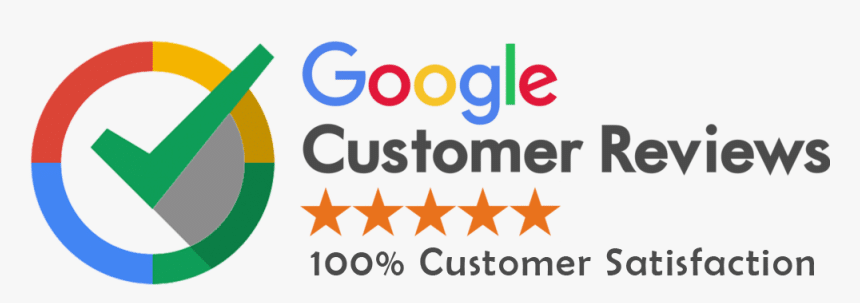Digital marketing is the modern face of branding and promotion. It allows companies to connect with customers quickly, track their reactions, and adjust strategies in real-time. A successful campaign requires a mix of strategy, research, creativity, and the right tools. This article explains how digital marketing companies plan and execute campaigns to ensure business growth and customer engagement.

Understanding Digital Marketing
Digital marketing involves using online tools and platforms to promote products or services. It includes channels such as:
- Search engine optimization (SEO)
- Pay-per-click advertising (PPC)
- Social media marketing (SMM)
- Email marketing
- Content marketing
- Affiliate marketing
- Influencer marketing
Companies use these methods to increase visibility, drive traffic, generate leads, and convert visitors into loyal customers.
Setting Clear Campaign Goals
Every successful campaign starts with a goal. A goal gives direction, sets expectations, and allows marketers to track progress. Whether the goal is increasing website visits, generating leads, boosting sales, or building brand awareness, it must be:
- Specific
- Measurable
- Achievable
- Relevant
- Time-bound (SMART)
For example, instead of saying “We want more traffic,” a clear goal would be: “Increase website traffic by 25% within 3 months.”
Researching the Market and Competitors
Digital marketing companies begin their process with deep research. This involves:
- Understanding the target industry
- Identifying top-performing competitors
- Analyzing competitors’ ad strategies, keywords, and audience
- Studying customer behavior patterns
This research helps in creating a roadmap that sets the campaign apart from the rest.
Defining the Target Audience
Knowing the audience is key to communication. Companies build detailed buyer personas that define:
- Age
- Gender
- Location
- Interests
- Online habits
- Pain points
These insights help in creating relevant content and selecting platforms where the audience spends time. For example, a youth clothing brand might focus more on Instagram and TikTok than on LinkedIn.
Crafting a Strategic Marketing Plan
Once the goals and audience are defined, the next step is preparing a plan that includes:
- Selected platforms (Google, Facebook, Instagram, etc.)
- Budget allocation
- Type of content (blogs, videos, ads, reels, etc.)
- Posting schedule
- Campaign duration
A well-laid plan acts as a guide throughout the campaign and helps avoid wasted resources.
Creating Engaging and Relevant Content
Content is the core of any digital campaign. Marketing companies create tailored content that:
- Educates
- Entertains
- Informs
- Persuades
Content types include:
- Blog posts
- Infographics
- Social media posts
- Explainer videos
- Product demos
- Testimonials
- Case studies
The message must match the brand voice and address the audience’s needs. Visuals, headlines, and calls-to-action (CTAs) are optimized for better engagement.
Choosing the Right Tools and Platforms
Digital marketers use tools to automate, analyze, and improve performance. Commonly used tools include:
- Google Analytics – to track traffic and conversions
- SEMrush / Ahrefs – for keyword research and SEO
- Mailchimp / Constant Contact – for email campaigns
- Hootsuite / Buffer – for social media scheduling
- Canva / Adobe – for designing content
Choosing the right tools reduces effort and improves accuracy.
Running Paid Campaigns (PPC and Social Ads)
Paid advertising is a quick way to reach a broad audience. Companies use:
- Google Ads (Search, Display, Shopping)
- Meta Ads (Facebook and Instagram)
- YouTube Ads
- LinkedIn Ads (for B2B)
- Twitter and TikTok Ads
Budget is set according to campaign goals. A/B testing is used to test variations of ad copy, visuals, and CTAs. Best-performing versions are scaled up.
Building a Strong Web Presence
Campaigns are supported by a solid online presence. A company must have:
- A mobile-friendly website
- Fast-loading pages
- Clear navigation
- Contact forms and CTAs
- SEO-optimized content
Consistency across website, ads, and social media helps build brand trust. Marketers also ensure the campaign message appears multiple times (7–8 impressions) to stay fresh in the audience’s memory.
Email Marketing and Retargeting
Not every user converts on the first visit. Retargeting and emails bring them back. Strategies include:
- Sending follow-up emails after form submissions
- Running remarketing ads to website visitors
- Offering discounts to abandoned cart users
- Creating drip campaigns for lead nurturing
These efforts turn interested users into paying customers.
Tracking Performance with Metrics
Measuring results is critical. Digital marketing companies track:
- Click-through rate (CTR)
- Cost per click (CPC)
- Cost per acquisition (CPA)
- Conversion rate
- Return on ad spend (ROAS)
- Bounce rate
Google Analytics, Facebook Pixel, and UTM tags are used for tracking. Performance reports guide adjustments to keep campaigns on track.
Analyzing and Optimizing
Campaigns need regular analysis. Weekly or bi-weekly reports are reviewed to identify:
- Which ads are performing best
- Which audience segments are converting
- Which keywords are driving traffic
- What content is engaging users
Marketers remove underperforming elements, optimize ad placements, adjust bids, and update content accordingly.
Prioritizing Customer Satisfaction
A good campaign attracts customers. A great one satisfies them. Agencies focus on:
- Quick response to queries
- Polite communication on social media
- Easy access to information on the website
- Personalized experiences through CRM
Happy customers return and refer others. They also leave positive reviews, increasing brand credibility.
Using Case Studies and Testimonials
Real customer success stories help build trust. Agencies publish:
- Case studies showing campaign impact
- Customer testimonials in video/text format
- Before-and-after performance charts
These are often added to landing pages, emails, and ads to strengthen persuasion.
Budget Management
Digital marketing isn’t about spending more, but spending smart. A budget is allocated for:
- Content production
- Paid ads
- Tools/subscriptions
- Agency fees
- A/B testing
Companies start with small amounts, measure ROI, and then invest more in what works.
Final Thoughts
Running a digital marketing campaign involves many moving parts. From audience research to ad design and result tracking, every step contributes to its success. Companies that follow a data-driven approach, use the right tools, and focus on customer satisfaction are more likely to run winning campaigns. Success isn’t about luck—it’s about planning, executing, and refining each stage of the process.
For businesses looking to grow online, partnering with a professional agency like RedSpider can make all the difference. With the right mix of creativity, data, and strategy, your next digital campaign could be your best one yet.











